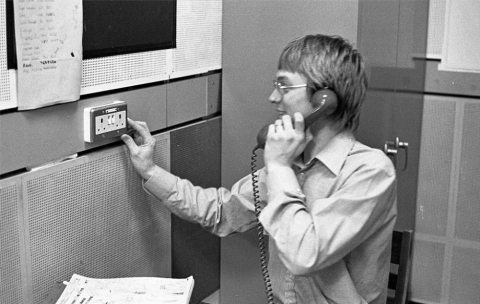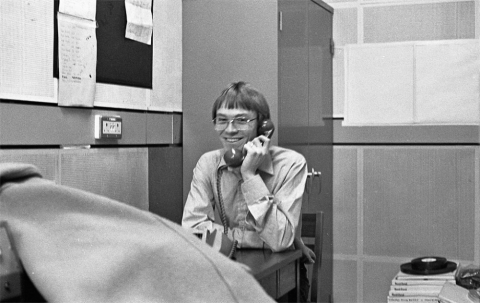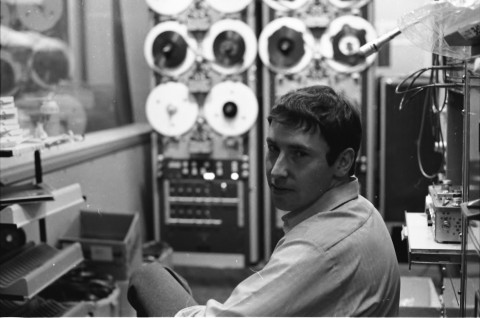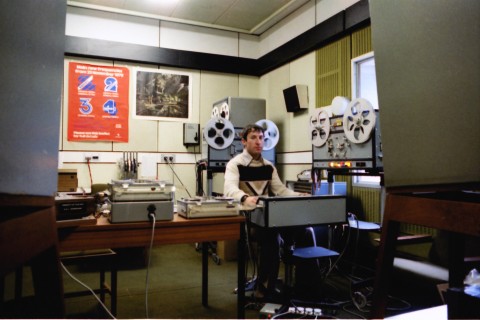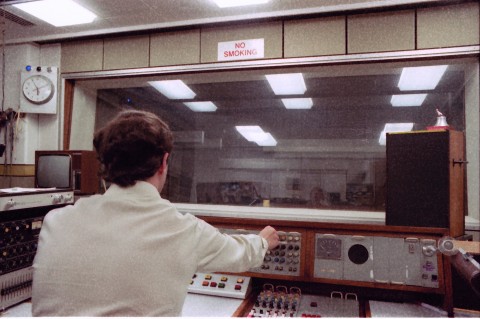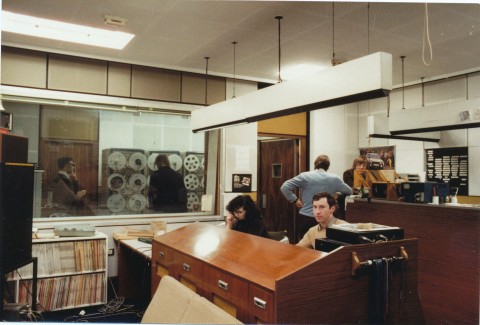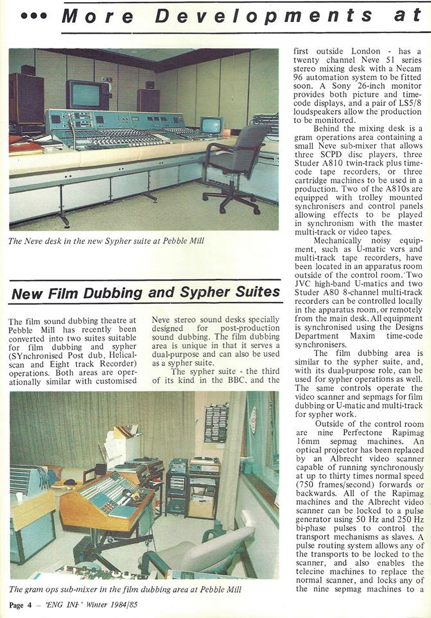

Copyright resides with the original holder, no reproduction without permission.
Thanks to Peter Poole for sharing these pages about technical developments, including a new dubbing and sypher suite, and Studio B control room refurbishment, at Pebble Mill in the internal BBC Engineering Newsletter from 1984/5.
The following information was added on the Pebble Mill Facebook group:
Keith Brook: ‘The original 1/4″ location sound was transferred onto special 16mm separate magnetic, sep-mag, film. Now, the film and the sound were the same ‘size’ and could be edited together by the film editor. If it was drama, for example, you’d end up with a complete film and dialogue track but minus the music, sound effects, wild-track and so on. You would them make a second, or third, sep-mag track that had the music, effects and so on, all in the right places but with extra lead-in and lead-out.
Dubbing was where you took that 16mm film, its matching 16mm dialogue track, the other tracks and put them on a huge machine that kept everything in sync. You would then run the whole lot through a sound mixer onto a final track, fading the effects in and out according to a dubbing script that matched the frame counter.SYPHER was a video system and is a BBC acronym for ‘SYnchronous Post-production using Helical-scan video and Eight-track Recorder’. Essentially, it worked like film-dubbing, but the 8-track sound machine was kept in sync with the video player by time code rather than mechanically as in film. Again, once you had the dialogue track and all the other bits in the right places, you would have a final ‘dub’ where you put it all together onto the audio track of the video recorder. The clever bit with SYPHER was the motorised faders on the sound desk which, again using timecode, would remember their settings at each moment during the final dub.’
Stuart Gandy: ‘Good memories of those times. This was during a period of 3 – 4 years of major refurbishment of the studio and VT areas. From the vision viewpoint in the studios , it was the change from the stalwart EMI 2001 cameras to the Link 125.’
